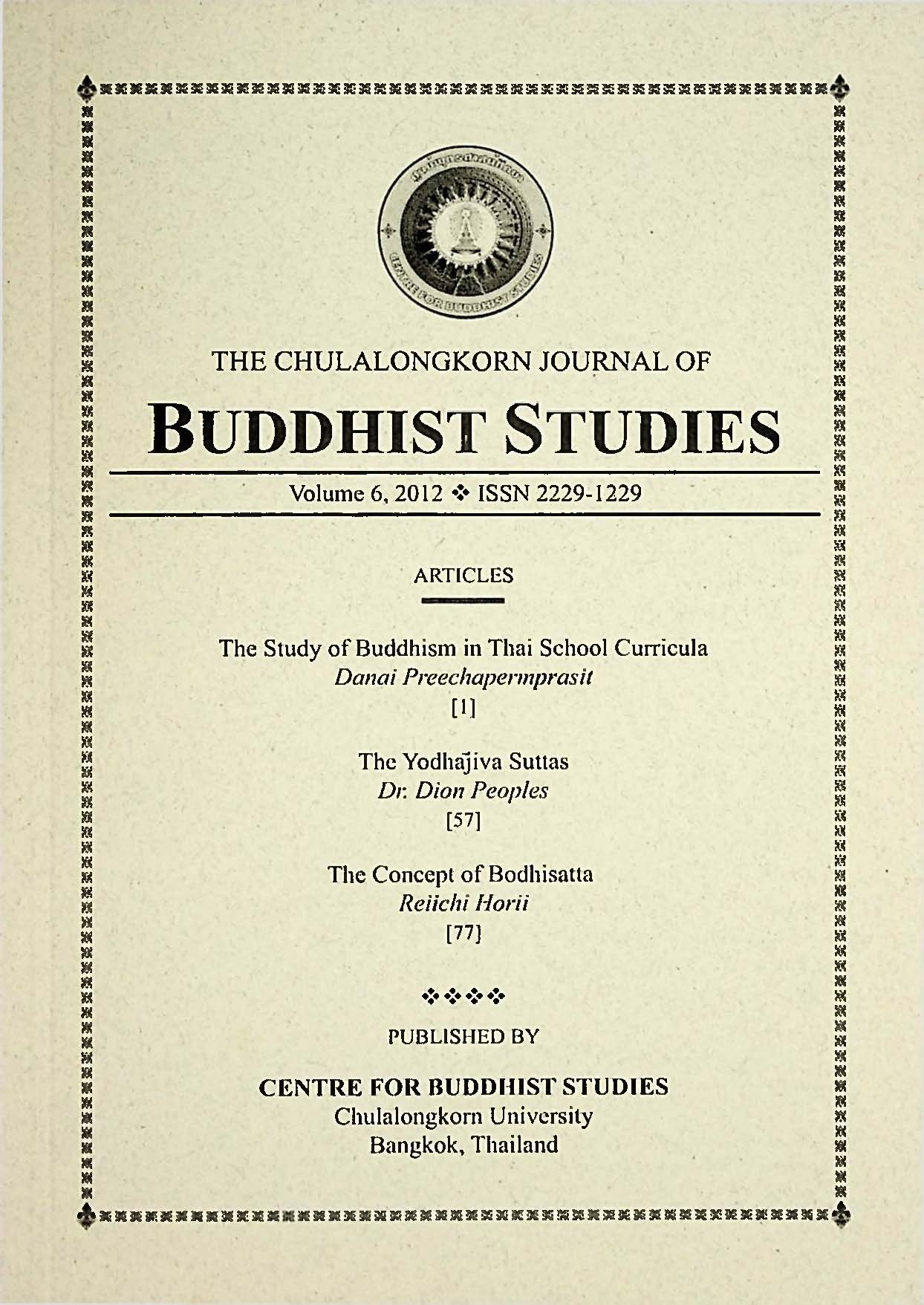The Concept of Bodhisatta
Abstract
In Buddhism, before a person becomes a Buddha, he has to go through the stage of being and practicing as a bodhi-satta (P,] bodhisattva, Skt). Bodhi of bodhisatta means enlightenment, and satta, a living or being.
Most non-scholars of Buddhism have a common misunderstanding that the teachings of Theravada and non-Theravada Buddhism, especially Mahayana, are essentially different. In fact, however, both teachings are based on that of the Buddha. For instance, in comparing the Noble Eight-fold Path (ariya-atthangika-magga) of the Four Noble Truths (cattari ariyasaccanty the heart of the Buddha’s teaching, and the Six Perfections (sad-paramita, Skt), a practice required of bodhisattvas in Mahayana Buddhism in order to attain Buddhahood, it becomes apparent that Theravada and Mahayana have a lot in common with each other.
The Four Noble Truths consist of the truth of suffering, the truth of the cause of suffering, the truth of the cessation of suffering, and the truth of the way to the extinction of suffering. The fourth of these Truths is the The Four Noble Truths consist of the truth of suffering, the truth of the cause of suffering, the truth of the cessation of suffering, and the truth of the way to the extinction of suffering. The fourth of these Truths is the <1> Right Understanding (samma-ditthi), <2> Right Thought (samma-sankappa), <3> Right Speech (sanund-vaca), <4> Right Action {Samma-kammanta), <5> Right Livelihood (sammd-dajTva), <6> Right Effort (samma-vayamd}, <7> Right Mindfulness (sarnma-sati), and <8> Right Concentration {samma-Samddh i).
The Six Perfections, or the six practices required of Mahayana bodhisattvas in order to attain Buddhahood, include (D Almsgivimg (danaidramita, Skt), which includes material almsgiving, almsgiving of the jiw, and almsgiving of fearlessness (removing fear and giving relief); © Obeying and practicing the precepts {sila-paramita, Skt); © Forbearance (ksanti paramita, Skt), or to endure patiently and continue one’s Buddhist practice under all circumstances and hardships; © Assiduousness (vTryaparamita, Skt); ® Meditation (dhydna-paramita, Skt); and © Wisdom (prajna-pdramita, Skt), which enables one to perceive the true nature of all things.
The correspondence between the Noble Eight-fold Path and the Six Perfections can be seen as follows:
<1> Right Understanding and <2> Right Thought ------------------ © Wisdom <3> Right Speech, <4> Right Action and <5> Right Livelihood------------------ (D Practicing the precepts <6> Right Effort-------------------------------------------------@ Assiduousness <7> Right Mindfulness and <8> Right Concentration------ . Meditation
The Six Perfections not only encompass all the practices of the Noble Eight-fold Path, but also add two practices, © Almsgivimg and © Forbearance, both of which have social dimensions.2 They are characteristic of the Mahayana concern for altruistic practice. The Noble Eight-fold Path, on the other hand, includes only practices for self-perfection, which are considered insufficient for altruistic practice.
References
Davids, T. W. Rhys, and Stede, William. 1972. The Pali Text Society's Pali-English Dictionary. London and Boston: The Pali Text Society.
Japanese-English Buddhist Dictionary. 1999. Tokyo: Daito Shuppansha.
Jayawickrama. N. A. 1951. The Nidanakatha of the Jataka Commentary. Colombo.
Jayawickrama, N. A., ed. 1974. Buddhavamsa and Cariyapitaka. London: Pali Text Society.
Jones, J. J., tr. 1952. Sacred Book of the Buddhists, Vol. XVIII. The Mahavastu. 3 vols. London: Luzac.
Muller, Max. 1894. Sacred Books of the East series, Vol. XL1X. Buddhist Mahayana Texts. Oxford: Clarendon Press,
Norman, K.R. 2001. The Group of Discourses. 2nd ed. Oxford: Pali Text Society.
Rahula, W. 1974. What the Buddha Taught: Revised and Expanded Edition with Texts from Suttas and Dhammapada. New York: Grove.







